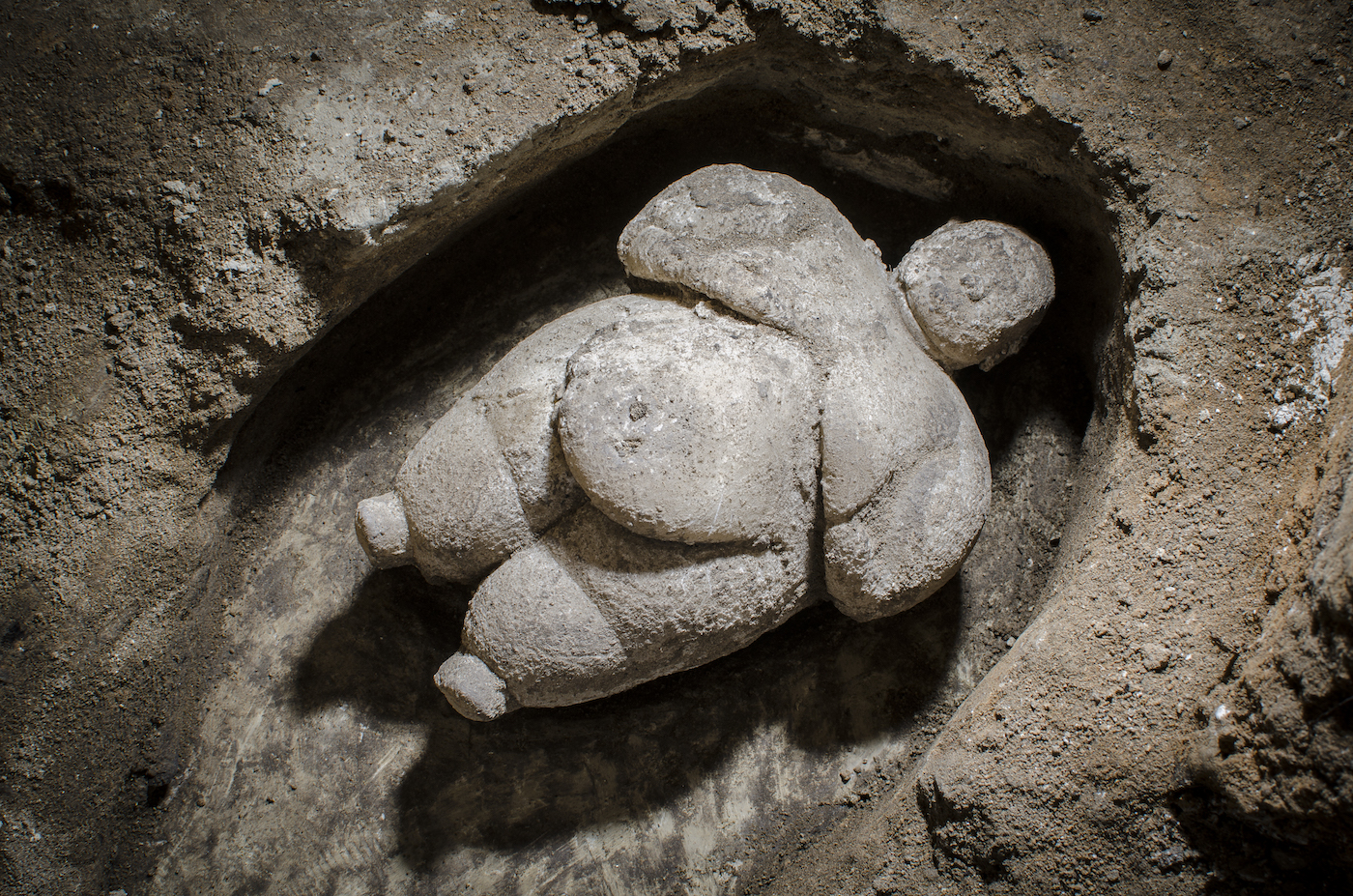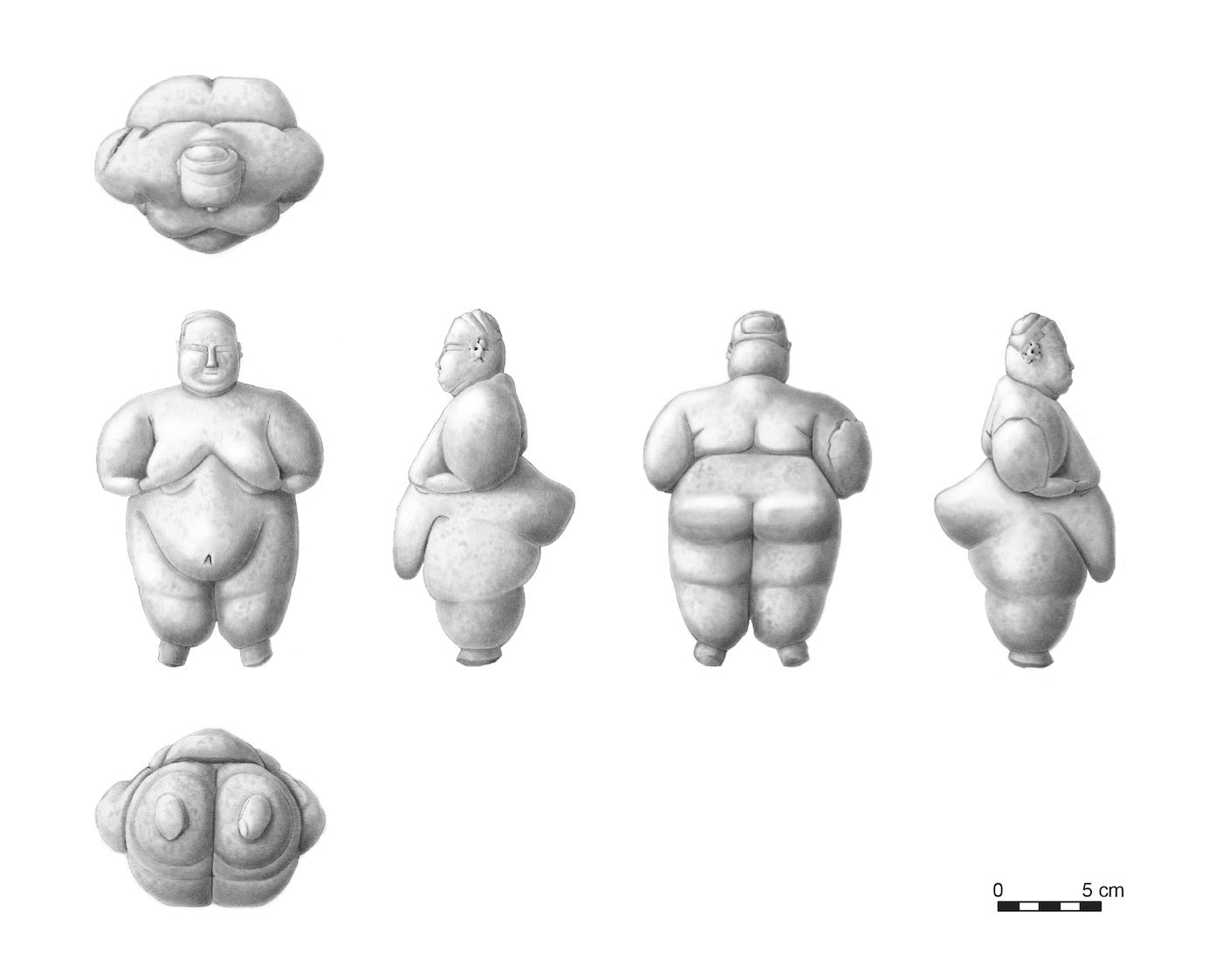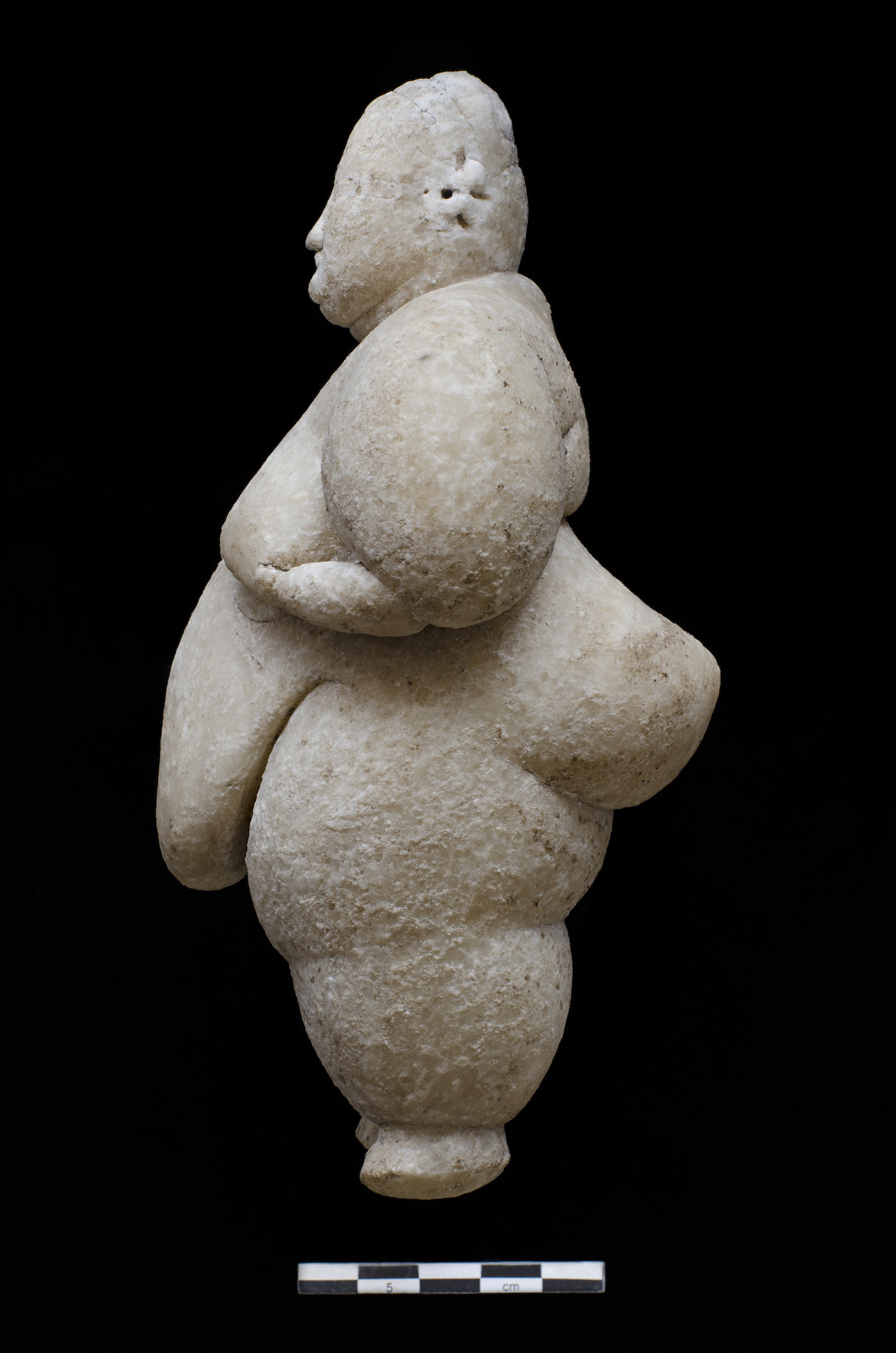Archaeologists in Turkey Find Neolithic Female Statuette Intact
Archaeologists in Turkey Find Neolithic Female Statuette Intact

The female figurine found at Çatalhöyük (all photos by Jason Quinlan, © Çatalhöyük Research Project)
The Neolithic site of Çatalhöyük, Turkey, consists of two settlement mounds — the remains of houses continually built over old ones — that have yielded many treasures since archaeologists began excavations in the 1960s. One of the most remarkable artifacts to emerge recently is a slightly weathered but fully intact, female anthropomorphic figure carved of marble — a rare find at the UNESCO World Heritage Site that illustrates one ancient craftsperson’s great level of skill. Archaeologists with the Çatalhöyük Research Project, which has explored the site since 1993, found it this summer in one of the site’s earliest structures; they estimates it dates to about 5500–8000 BCE.
The team had discovered the rounded figure lying next to a piece of obsidian, a position that suggests “some form of ritual deposition,” according to a statement. “The context shows that this figurine differed from others in its completeness and careful deposition, as well as in its very fine craftsmanship.” Weighing just over two pounds, it spans about half a foot long and three inches thick and is also carved from marble. While Çatalhöyük has proven home to many old figurines, most of these are clay and typically depict animals. Many also tend to end up in areas of refuse and are found broken. Archaeologists have also found others carved from stone, but these too, are rarely completely preserved.
The late Marija Gimbutas takes credit for her identification of similar figures found throughout Western Asia, Anatolia and southeast Europe — published in The Goddesses and Gods of Old Europe, but rarely do archaeologists know the detailed context of these objects. Archaeologist Lynn Meskell has suggested that Neolithic statuettes at Çatalhöyük represent older women, with their full figures symbolic of great wisdom, and Çatalhöyük Research Project’s director Ian Hodder agrees that the new artifact suggests such an interpretation.
Portrayed with large buttocks and small feet, with her hands on her breasts and her hair in a bun, the figurine reflects a style typical of Çatalhöyük. The artist had shaped the marble by polishing the material, giving it more human expression with incisions to depict eyes, a mouth and chin, and even neck fat. There’s even a navel, formed by a knick in the shape of a triangle.
As the team notes, the settlement at its peak was home to 3,500–8,000 residents, who lived in houses that were at times adorned with rich art. The marble figurine is just one reminder of the symbolically complex role art played for the community; the site also boasts many paintings and reliefs, clay seals, sculpture, and, among the most unique of works, bull’s head sculptures mounted to walls.

Illustration of female figurine found at Çatalhöyük (image by Kathryn Killackey, ©Çatalhöyük Research Project)

The female figurine found at Çatalhöyük

The female figurine found at Çatalhöyük

Comments
Post a Comment